Cleome, a member of the Cleomaceae family, is an annual flower found worldwide. Known for its ability to self-seed, this striking plant often returns year after year with minimal effort. Its tall, airy stems, adorned with delicate, spider-like blooms, make it a standout addition to flower beds and garden borders.
One of the rewarding aspects of growing cleomes is their ability to spread naturally. For gardeners who prefer more control, seed pods can be collected before they burst and used to plant cleomes in other parts of the garden. With proper care and placement, cleomes can transform any space into a vibrant, colorful display.
| Common name | Bee Plant, Spider Flower, Spider Plant, Spider Weed |
| Botanical name | Cleome |
| Family | Cleomaceae |
| Origin | Found all over the world |
| Life cycle | Annual |
| Plant type | Annual |
| Hardiness zone | 9, 10, 11 |
| Sunlight | Full Sun |
| Maintenance | Low |
| Soil condition | Clay |
| Drainage | Well-Drained |
| Growth rate | Fast |
| Spacing | 12 in. – 3 ft. |
| Harvest time | Fall |
| Flowering period | Fall |
| Height | 4 ft. – 6 ft. |
| Flower color | Pink |
| Leaf color | Green |
| Stem color | Green |
| Fruit type | Capsule |
| Flower benefit | Fragrant |
| Garden style | Cottage Garden |
| Uses | Coastal |
I. Appearance and Characteristics
Cleome is a genus of flowering plants in the family Cleomaceae, commonly known as spider flowers, spider plants, spider weeds, or bee plants. Previously, it had been placed in the family Capparaceae, until DNA studies found the Cleomaceae genera to be more closely related to the Brassicaceae than the Capparaceae. Cleome and clammyweed (Polanisia dodecandra) can sometimes be confused.
The genus sensu stricto includes about 170 species of herbaceous annual or perennial plants and shrubs. The genus has a subcosmopolitan distribution throughout the tropical and warm temperate regions of the world. However, a recent DNA study failed to separate Cleome, Podandrogyne, and Polanisia from each other, so some taxonomists have abandoned the last two of these genera, treating them as part of Cleome sensu lato; in this case, Cleome contains about 275 species, the vast majority of the Cleomaceae.
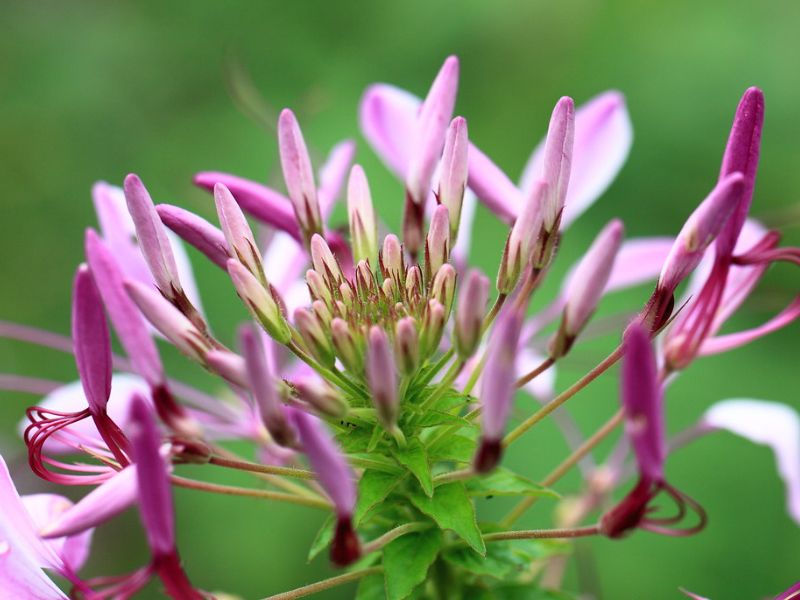
The genus contains species which show an evolutionary progression from C3 to C4 photosynthesis. This, combined with it being very close to the Brassicaceae with the model plant species Arabidopsis thaliana, makes it an ideal genus in which to study the evolution of C4 photosynthesis. Morphological differences that demonstrate the transition from C3 to C4 include C3 species having leaves with more veins and larger bundle sheath cells. Also, species such as Cleome gynandra produce proteins needed for C4 photosynthesis. Three species independently acquired the C4 pathway, while others are C3–C4 intermediate or C4-like.
II. How to Grow and Care
Sunlight
Cleome flowers grow best in full sun, and shady conditions can make them grow too tall and topple over. If you start with transplants, blossoms will appear from early summer until the first frost. Gardeners who grow cleome from seed usually see the first flowers in mid- to late-June, depending on the climate.
Temperature and Humidity
For successful germination, cleome seeds need higher-than-normal temperatures. Fluctuating day/night temperatures are essential for optimum germination. During the day, temperatures should range from 80 to 85 degrees Fahrenheit; nightly temperatures should stay between 68 and 70 degrees Fahrenheit. The humidity should be from 90 to 100 percent. As the plant grows, the temperatures can be lower, from 75 to 80 degrees Fahrenheit during the day and 60 to 65 degrees Fahrenheit at night. Cleomes are not frost-tolerant.
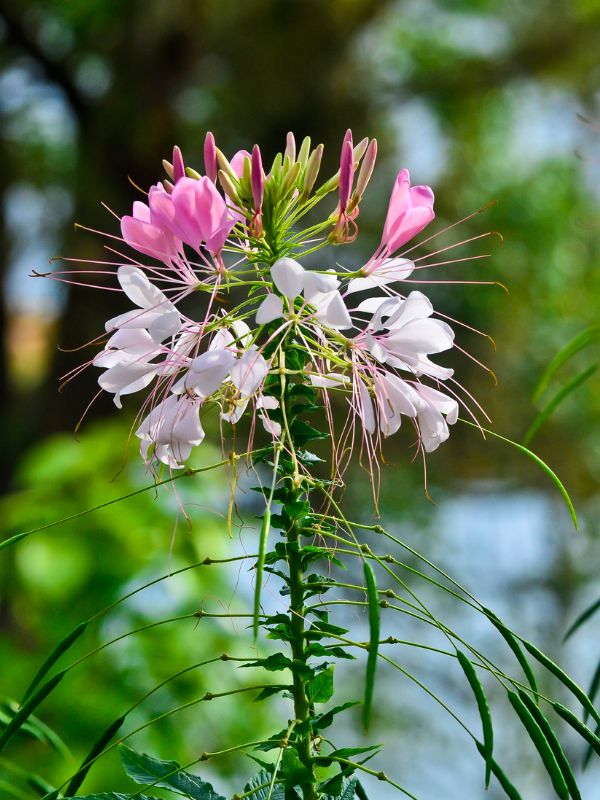
Watering
Once established, cleomes are drought-tolerant, making them a welcome addition to the xeriscape garden. Add a three-inch layer of organic mulch to their planting bed, and you will decrease their water needs even further.
Soil
Cleomes do best in average garden soil or rich, well-drained garden loam.
Fertilizing
If using good, well-drained soil and mulch, no fertilizer is necessary.
Pruning
Cleomes need very light pruning. Snip off dead leaves or damaged areas during the growing season. If the plants are spindly right before planting, trim them back by half to encourage new growth once they are in the ground.
Propagation
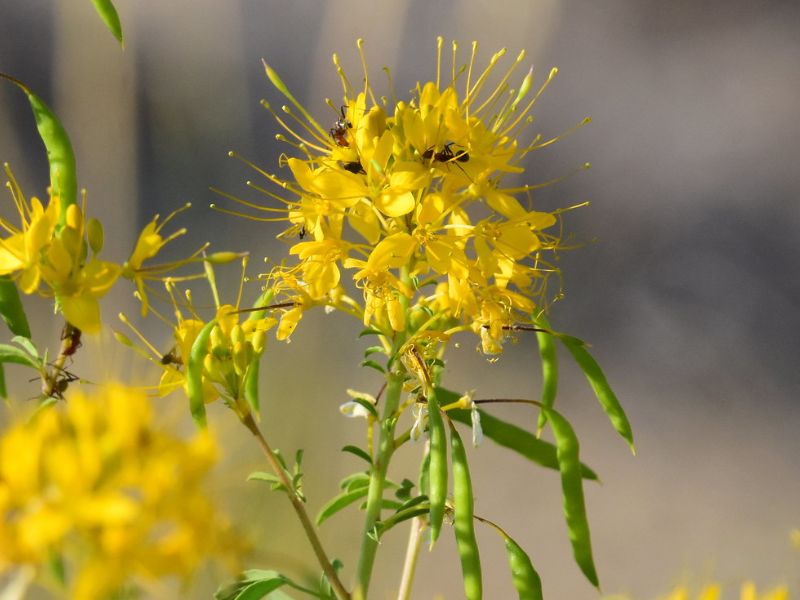
Cleomes grow from seed, so propagating is not only unnecessary but tends to be an unfruitful endeavor.
How to Grow From Seed
Cleome plants are easy to start in the garden from seed. Perhaps too easy because the plants can self-seed to the point of being a nuisance. The seeds need light to germinate, so you can just sprinkle them in the garden after the danger of frost is past and look for seedlings after ten days. Alternatively, sow them in the autumn, and they will germinate when conditions are just right in your garden the following growing season.
If you do allow the plants to self-seed, thin the newly emerging seedlings to allow at least 18 inches between plants. This improves the vigor of individual plants, encouraging the most blossoms from each plant. If you want to limit cleome’s self-seeding habit, remove the long seed pods that form.
Potting and Repotting
You can grow cleome in large containers, but choose a compact variety like the Sparkler™ series for best results. Combine your potted cleomes with a mounding flower like vincas and a trailing flower like petunias for a full and lush container.
How to Get to Bloom
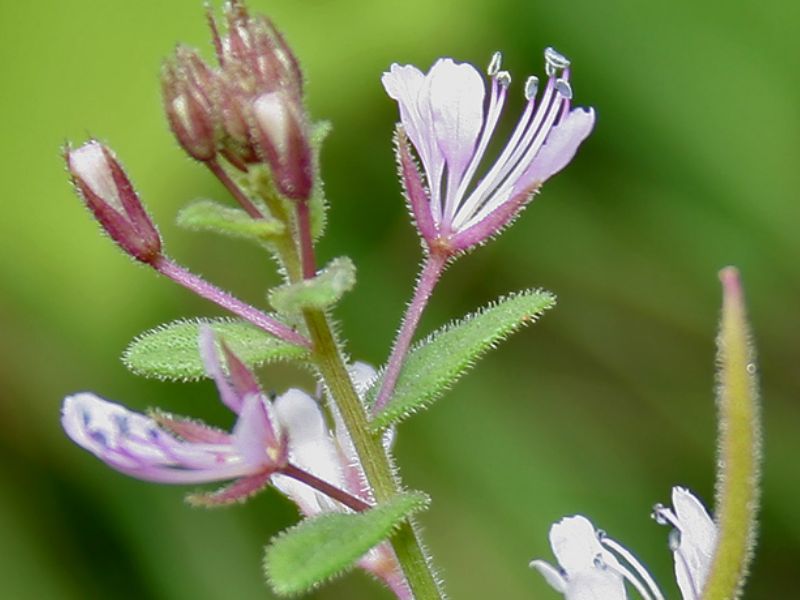
Fortunately for the home gardener, cleomes are quite easy plants to grow and maintain. A good watering habit will help establish them; once established, they are drought-resistant and respond well to pruning. Deadheading cleomes will encourage new growth while preventing it from self-seeding, thus keeping the garden neater.
Pests and Diseases
Cleomes are surprisingly resistant to pests and quite resilient against common plant diseases. Mildew and rust might become a problem if the plants are too crowded; thin the plants to avoid this problem. If the soil is not healthy, the plants will not be as healthy as they could be, and that will attract insects that could shorten the life of the plant.
III. Cleome Varieties
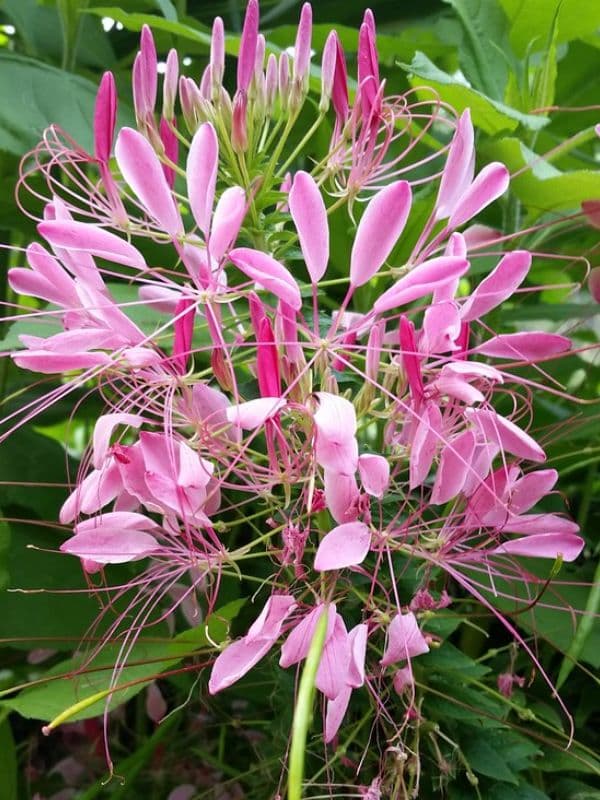
From the 180 varieties of cleomes, here are a few that are popular among gardeners for their color and growth habit:
- ‘Helen Campbell’ is a variety that offers pure white flowers and needs very little care.
- ‘Linde Armstrong’ is a compact 12- to 18-inch, sterile, and thornless variety with pink, rose, or mauve blooms.
- ‘Rose Queen’ is fragrant and eye-catching. This cultivar comes in shades of purple, white, cherry, and rose. Be mindful of the spines growing at the base of each leaf.
- ‘Sparkler Bush’ is a unique hybrid plant that has a bushy look with white or pink flowers.
- Spirit™ series offers two to four foot tall plants with a better branching growth habit, but it has thorns and sticky foliage. Blooms can be white, pink, or lavender.
Find Where to Buy the Best Spider Flower (Cleome)




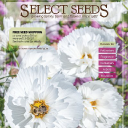
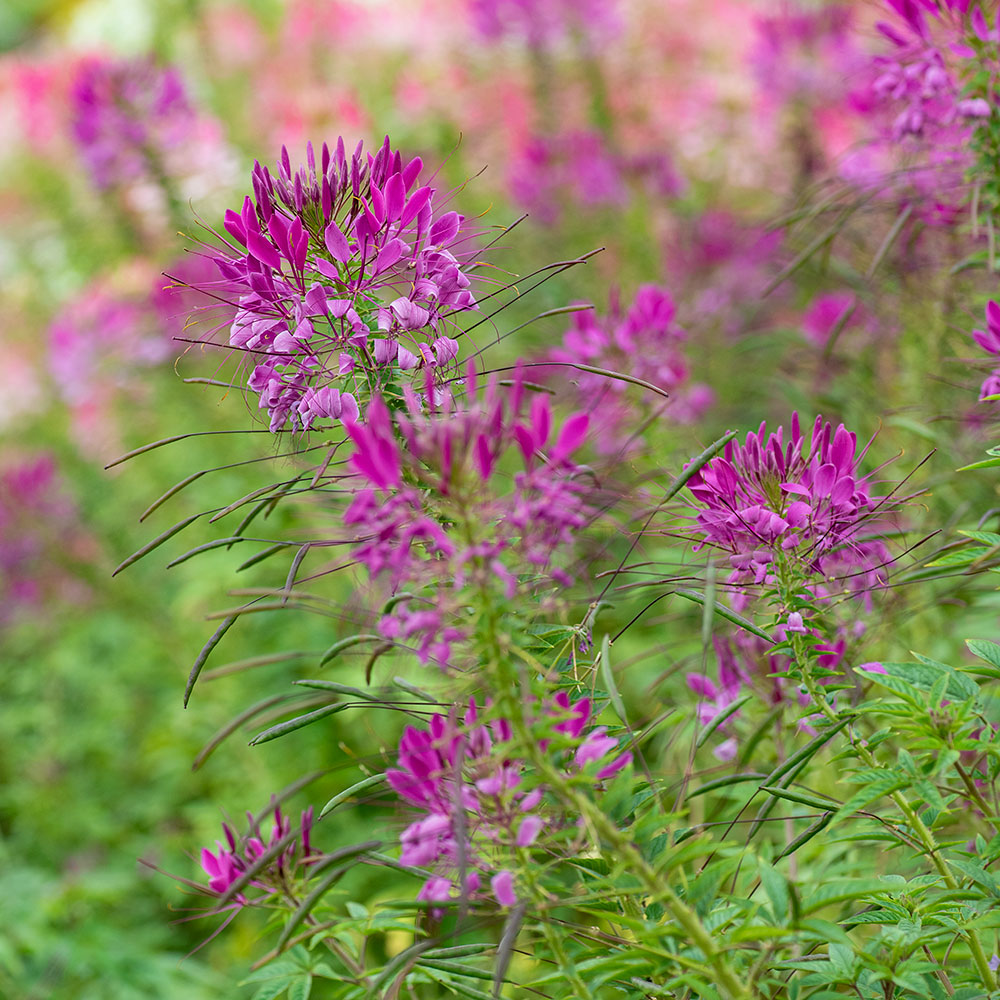

_in_Gavi.jpg)








Leave a Reply